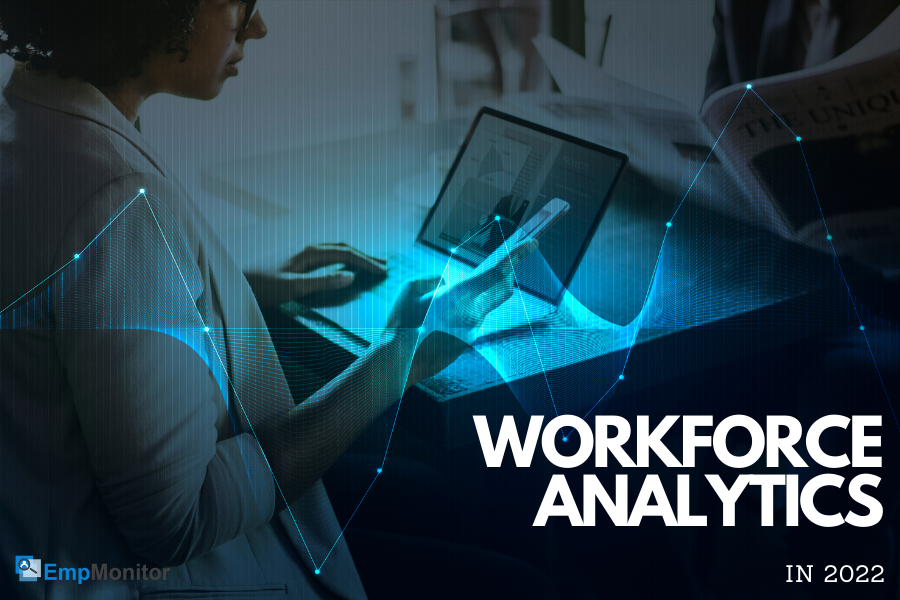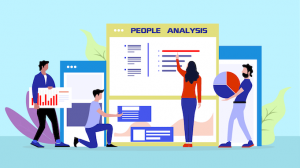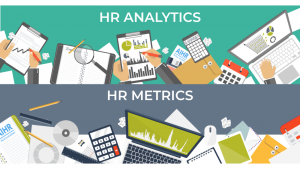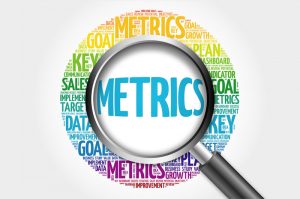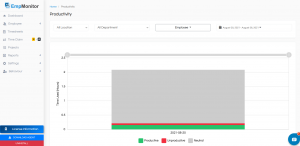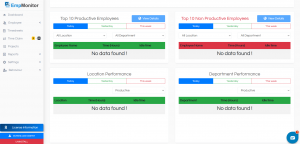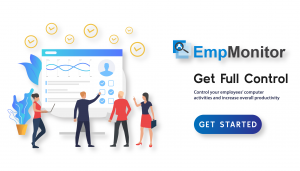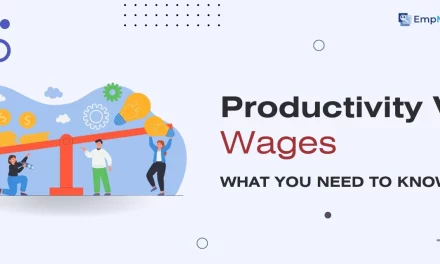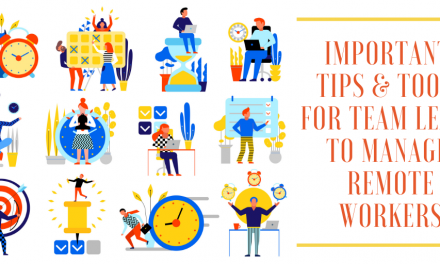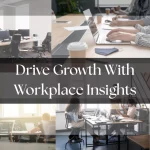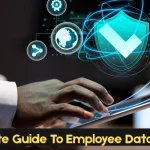With the development in the corporate world, workforce analytics has seen some changes and is maturing and developing at a faster rate than ever. Let us see how far it has come through all these years and learn extensively about it.
What is Workforce Analytics?
Workforce analytics is a technique used to measure and analyze the actions of employees to enhance their performance. It is achievable by evaluating data from individuals with statistical methods and software to make improved decisions by employees. The practice assesses the influence of employee behavior and other relevant aspects on overall business success.
Managers harness the power of hr metrics and workforce analytics to achieve the following objectives:
- Make sound hiring decisions by predicting the success rate of the candidate.
- Make improvements to the experience of the employees.
- Predict work-accident risks and take steps to avoid them.
- Highlight the productive employees from the non-productive ones.
- Examine the future workforce requirements.
Workforce Analytics vs. People Analytics
While both terms (workforce analytics and H.R. analytics) are interchangeable, there is a distinction between the two.
Workforce analytics is most commonly linked with Talent Management and is primarily concerned with evaluating the data of their employees. Workforce analytics is often associated with analytical software that maintains and reports on employee data.
Human resource analytics is concerned with several aspects of the company as a whole. It might involve H.R. operations daily, process efficiency, or strategic organizational difficulties in other areas.
Workforce analytics should constantly collaborate with decision-makers to make it easier to obtain information and make better decisions. Otherwise, H.R. analytics are practically unnoticeable if they do not get information duly.
How does Workforce Analysis benefit Corporates?
Workforce analytics may assist companies in more effectively addressing workforce management issues or opportunities. Among the organizational advantages are:
- Capability to discover possible individuals who are a good fit for the organization’s needs and work culture.
- Potential to predict which personnel would be high-performers and give the necessary resources to keep them.
- Determine the requirement for future organizational demands for the fulfillment of talent requirements through recruiting.
- Determine the indicators that indicate employee engagement and job satisfaction to maintain a high-performing workforce.
- Identify and prioritize emerging talent for future succession planning.
It is also feasible to compare several departments more precisely and understand the factors impacting teams’ capacity to work together and collaborate to accomplish common goals. It is never simple to conclude from complicated information, and it is especially true when it comes to the workforce.
Companies can make better, quicker, data-driven choices and establish best practices for an optimized human resource by committing to an analytical framework, resulting in higher employee happiness, enhanced employee experience, and increased retention.
Workforce analytics is becoming a more valuable resource for businesses trying to create a genuinely engaging workplace. With today’s work-from-home culture, employees must engage in ways that were not previously feasible in a typical office setting. Gaining fresh insights by using data is a tangible method to leverage technology while providing people with opportunities to grow.
Workforce Analytics: What does it measure?
Workforce analytics comes in three categories: productivity, engagement, and adaptation. Companies obtain knowledge of workplace performance by monitoring characteristics in all of these areas, including how employees react to their surroundings and one another.
- Productivity of employees: Management and senior leadership have a direct impact on employee productivity. The onboarding process, data management, and access, and work hours are all instances of observable productivity dynamics. Workforce analytics seeks to comprehend the underlying behavior and practices that occur from business culture and anticipated norms.
- Engagement of the employees: Employees that are engaged are more productive and committed to the company’s purpose. Employees who do not feel valued or understood may find it tough to provide frank feedback to make improvements. Employee retention, development planning milestones, and perceptions of work-life balance are some significant employee engagement measures.
- Adaptability in the workplace: The COVID-19 epidemic has tested even the most resilient organizations’ fortitude. A company’s adaptability may be measured by looking at its organizational structure, work styles, and attitude to change management, to name a few factors. Another significant aspect of workforce analytics is using internal and external trend analysis and how it affects goal-setting and decision-making processes.
These analytics do their job efficiently and derive valuable information for H.R. to make sound employability decisions. But these analytics still need metrics to get that data from for their analysis. To know more about the attendance and time tracking of your employees, click here! Let’s take a look at these metrics, shall we?
H.R. Metrics: Data for Workforce Analytics
As time passes, more and more organizations rely on the reports from their H.R. department to make good decisions for the employment of new employees. Organizations are finally beginning to notice an improvement in quality of life in the workplace. After making decisions based on the information provided on the metrics, we are about to discuss.
What are H.R. Metrics?
H.R. metrics, often known as human resource metrics, are essential numbers that assist businesses in tracking their human capital and determining the effectiveness of their human resource efforts. Turnover, cost-per-hire, benefits participation rate, and other metrics are examples of such data (we’ll go over more of them later).
Measuring this type of information—what works effectively, what needs to be improved, and what trends to expect in the future—assists businesses in developing their people strategy.
In other words, human resource metrics are various measurements used to demonstrate the value that the human resources function brings to the organization. These metrics indicate the effectiveness of the human resources department and their contribution to the performance of the business.
Metrics work on quantifiable, concrete facts – or numbers – and they inform you about what’s going on since they’re usually goal-oriented. Metrics are vital for calculating the value of resources, tracking and presenting historical data to influence decision-making in the future.
The data that this H.R. metrics work on are from the following sources:
- The best source of employment: When it comes to inbound leads, recruiters now turn to many sources, including social media, email marketing, and various job sites. It is critical to understand which channels are operational and which are not. This H.R. measure isn’t about identifying the source with the most applicants; it aims to hone in on the source that contributes the most to your hiring strategy.
Determine the number of applicants per channel, the quality of each candidate’s performance, and the post-hire attrition rate. The source that performs well across all three characteristics merits additional investment in 2020.
- Total money spent on a new hire: How much the organization is spending on a fresh employee is a metric to track! Companies that onboard new talent fast without considering the cost per employee can quickly outgrow their H.R. expenditures.
Look at the cost of job advertising, the effort put in by different stakeholders in hiring the applicant, the time it takes to close a requisition, and the value the recruit contributes to your organization to assess the amount of money spent per hire. A disproportionate cost of a candidate is a strong indication that your recruiting approach has to be optimized.
- By calculating individual employee earnings: This measure demonstrates how efficiently your staff use resources and how productive they are. It also ensures proper work distribution so that no employee in the business feels overwhelmed or underwhelmed.
For example, there may be many high-performing people in the workplace, but the revenue per person is low; this indicates an inequitable division of labor. Measuring revenue per employee is simple: divide your net earnings (not gross) for the year by the number of employees.
- When was the last time an employee felt appreciative in the organization?:
The quality of the employee experience is an essential measure to consider. The frequency of recognition is a factor when it comes to employees’ dedication and satisfaction at work. H.R. may use pulse surveys to determine the frequency of both official and informal acknowledgment.
Ask a straightforward question, such as, “When was the last time your management thanked you for your efforts?” When significant numbers cannot recall or say that it was a long time ago, the quality of their experience is suffering.
Several metrics exist that constitute the data required for Workforce Analytics to make employment decisions. These are only a handful of them. To conclude, H.R. metrics are simply quantifiable values that make it easier for the H.R. department of a company to make better, solid decisions for the workforce of an organization.
Workforce Analytics, almost always an afterthought for most entrepreneurs, face several challenges leading to an organizational loss in the longer run. These challenges have to be taken care of and made contingencies for when necessary. Let us take a look at some of them!
Struggles of Workforce Analytics:
- A lack of data analysis skills: Many professionals struggle to manage data because they lack analytical skills. Combining human resources with data analytics can be difficult for employees who lack the expertise and understanding to manage huge or smaller quantities of data. Fortunately, educational opportunities and software solutions that do not need technical knowledge have enabled professionals to evolve into analysts; Allowing them to use tools to handle heavy data processing while focusing on the workforce and human aspects of work.
- Managing numerous data sources: Human resources must combine data from various sources and business lines such as sales, marketing, product, etc. To generate meaningful insights, they must collect data from many departments and execute the analysis. Modern technologies will serve as an option for successfully organizing and cumulating data from many operations since they can handle big (or small) datasets, link to any data source you may have, and allow you to focus on management.
- Removing the Human factor: Workforce analytics make a professional’s life easier and decision-making processes more effectively to save company expenses. Allowing software, a computer, a spreadsheet, or a random number to determine who to recruit is never the best answer. The goal of workforce analytics is to encourage professionals and to build an atmosphere for making better decisions. But the ultimate word should always have the human factor. Data exists not to replace individuals but to bring value to businesses.
All organizations and their workforce analytics face these challenges. As valuable as humanity is in a workforce, data collection and the analysis of this data is no task for a human.
Employee management software packages like EmpMonitor provide the human resource department of an organization with numerous metrics to request data from the employees and analyze them for you! It ensures more time for managing your employees and less time for managing your data. Let us learn more about this miracle for personnel everywhere! Here’s a list of 10 more productivity tools that will benefit your organization! Let’s read ahead about EmpMonitor, the best one out there!
Also Read:
’07 Positive Approaches for Employee Wellbeing and Engagement This Christmas
How To Identify Best PC Monitoring Tools (Paid & Free) | 2021 Update
Whys and Benefits of Employee Recognition for Businesses
EmpMonitor: Bless your Workforce Analytics!
The eye-catching visuals and thorough reports in EmpMonitor, the best workforce analytics software in the industry, will provide you a 360-degree view of your organization’s productive processes. You may filter the data by knowing the working hours of your Top Ten workers by location. Check your organization’s productive and non-productive hours daily and highlight what you can do to make it better.
Do you want to find out when your most productive day was? EmpMonitor can assist you in gaining insights about your firm’s busiest working day, and you may see it by location, department, and, yes, date as well!
Note: The screenshots below are strictly for presentation purposes. The actual user experience may vary.
Employee Productivity Tracking
Track the productivity of your employees to acknowledge their efforts and highlight the ones who are not being productive enough. Make improvements in your workplace to encourage employee productivity and incentivize according to their performance in the organization! Our intuitive charts will provide you all the data you needed to make the right calls for your workforce analytics!
Take a look at everything at once!
Get information about the strength of your employees and the present and absent ones from the dashboard itself! There is no looking around for the time that is gone. Everything is present right there on the front page for your analysis. For deeper insights, you may click on the sidebar on the left-hand side of the screen to evaluate and make better decisions.
Incentivize your Finest!
EmpMonitor automatically classifies and segregates data and highlights the top 10 most productive employees and their counterparts for you! Thanks to its algorithm, it computes data from its systems to generate productivity reports for you to make better decisions!
Don’t just track your employees, track their emails too!
EmpMonitor lets you monitor the emails inside the organizational channel to save H.R. personnel to avoid insider trading or information leak from any communication channels.
EmpMonitor lets you do so much more at very affordable prices, so you do not miss out on the best employee management software out in the market right now! Check out EmpMonitor today and boost your workforce analytics through the roof!
Check out all the ways in which we have benefitted our customers and their productivity! Here is our year in review for 2021! Make sure to give it a read!

